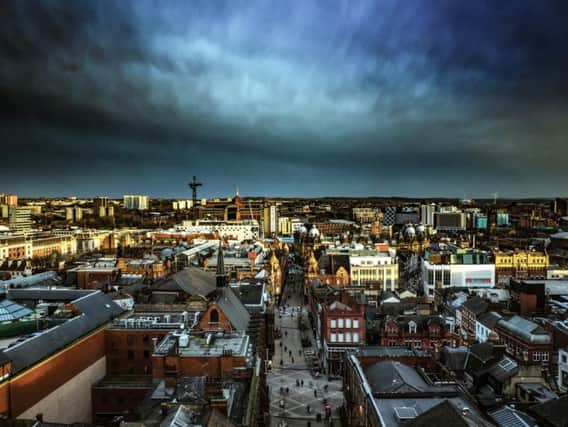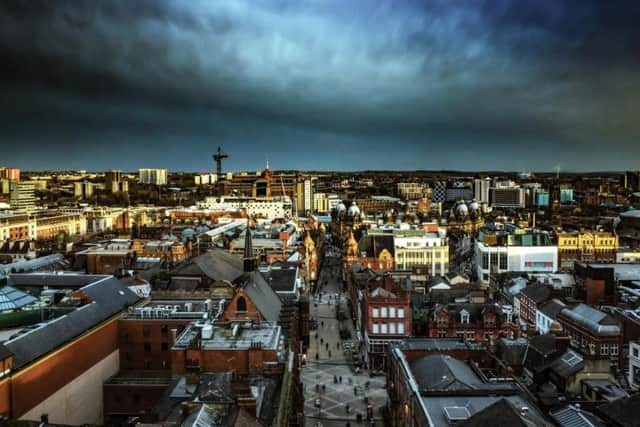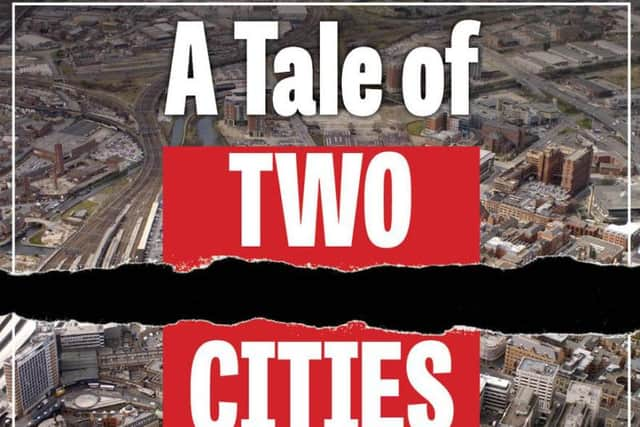Children born in these Leeds areas will live 10 years longer, shocking inequality figures show


But one family living just seven miles down the road from another faces a very different future in our two-speed city.
Today the Yorkshire Evening Post lays bare in a series of special reports the growing gulf in social inequality in different areas of Leeds.
Advertisement
Hide AdAdvertisement
Hide AdIt is a stark reality that one child born in one ward is likely to live ten years longer than another baby born in a different area.


Average house prices in some parts of Leeds are approaching the half a million pound barrier while other families face the prospect of sleeping on a mattress on the bathroom floor because there is simply nowhere else for them to sleep.
Today the YEP is calling on the city’s leaders to show what they are doing to bridge that gap to ensure nobody gets left behind in one of the fastest growing cities in the country.
It’s almost become a tale of two cities.


Advertisement
Hide AdAdvertisement
Hide AdOne the one-hand there are Porsches parked outside stately home estate cafes while more than half of people living in a different suburb don’t even own their own car.
Average house prices in one ward are breaking the half a million pound barrier while another family faces the prospect of another night on a mattress on the bathroom floor because there is nowhere else for them to sleep.
A child going to school in one part of the city is forced to compete for a place in an over-subscribed classroom as their stomachs rumble because every day is a struggle to put a hot meal in their bellies.
Meanwhile in other parts of the city a child of the same age, in the same year at school has never seen a Government inspector from Oftsed visit their classroom because their school was rated as outstanding and hasn’t needed an inspection for the last ten years.
Advertisement
Hide AdAdvertisement
Hide AdThis is the reality of life in two parts of Leeds - Harewood and Harehills.
There is just seven miles as the crow flies between them but the gulf between the two has never been wider.
The outcomes for children born in these wards are very different including the stark reality that a baby born in one ward will live ten years longer than a child born on the same day in a different ward.
Advertisement
Hide AdAdvertisement
Hide AdIt points towards a growing gulf in social inequality within the city and the Yorkshire Evening Post will this week run a series of special reports looking at what it’s like to live in a two-speed city and how leaders can look to bridge the gap.
Charity intervention
Dominic Charkin, is the operations manager at Zest, a not for profit organisation and charity which offers support and opportunity to people living in disadvantaged areas of the city.
He said: “The facts are stark. Someone born in the most affluent area is likely to live 10 years longer than someone born in a poorer area.
“That is not end of life - that is saying because someone is born somewhere, the chances they have in life will set them off on a different path.
Advertisement
Hide AdAdvertisement
Hide Ad“It feels unfair that if you are born somewhere, and it does not mean it is going to, but they are more likely to be born into non-working, low income families, diet will be poor, they might suffer things like teeth extractions early in life, they may be poorly educated, don’t have any positive role models.
“These things are theoretical but it happens more often than not, the statistics tell you that it happens and what we try and do is provide opportunities and help for these people.”
Research suggests the pattern outlined by Mr Charkin is being followed.
Statistics from Leeds City Council show Harewood is the least populated council ward in the city with an estimated population of 19, 423 (according to 2017 figures). Other than Little London, the Gipton and Harehills ward has the highest population with 32, 308 residents noted. However, 63 per cent of those are from an ethnic minority background and more than 16 per cent of households don’t have English as a first language.
Advertisement
Hide AdAdvertisement
Hide AdOver in Harewood the comparative figure is that seven per cent of the population are of ethnic minority and not even one per cent don’t speak English as a main language.
Around half a per cent of the population claims unemployment benefits while in Harehills that figure is nearer to 17 per cent.
Children in Gipton and Harehills fall below the Leeds and national averages for school achievements but that said, one local primary is operating with more than 100 extra pupils than it can cater for.
Advertisement
Hide AdAdvertisement
Hide AdOf the 8,590 properties in the village, used for a television soap opera set, just one per cent is classed as over-crowded while in Gipton and Harehills, 8.9 per cent of the 12, 240 properties are overpopulated.
Crime rates also vary vastly between the two with Gipton and Harehills recording 6, 064 for the period June 2018 to May 2019 and Harewood, 971 respectively.
Health, well-being, economy, crime and environment are all contributory factors for life expectancy.
In Harewood the figures for men are 85 and 88.6 for women while in Harehills it is 76 and 81.2 respectively.
Advertisement
Hide AdAdvertisement
Hide AdMr Charkin added: “In the most deprived areas, it is very visible what the issues could be - litter or graffiti - it makes the area less desirable.
“But in some of the more affluent areas, people live in big houses but might not be able to afford to heat them, transport can lead to social isolation.
“Inequality and the issues from that can manifest in different ways.”